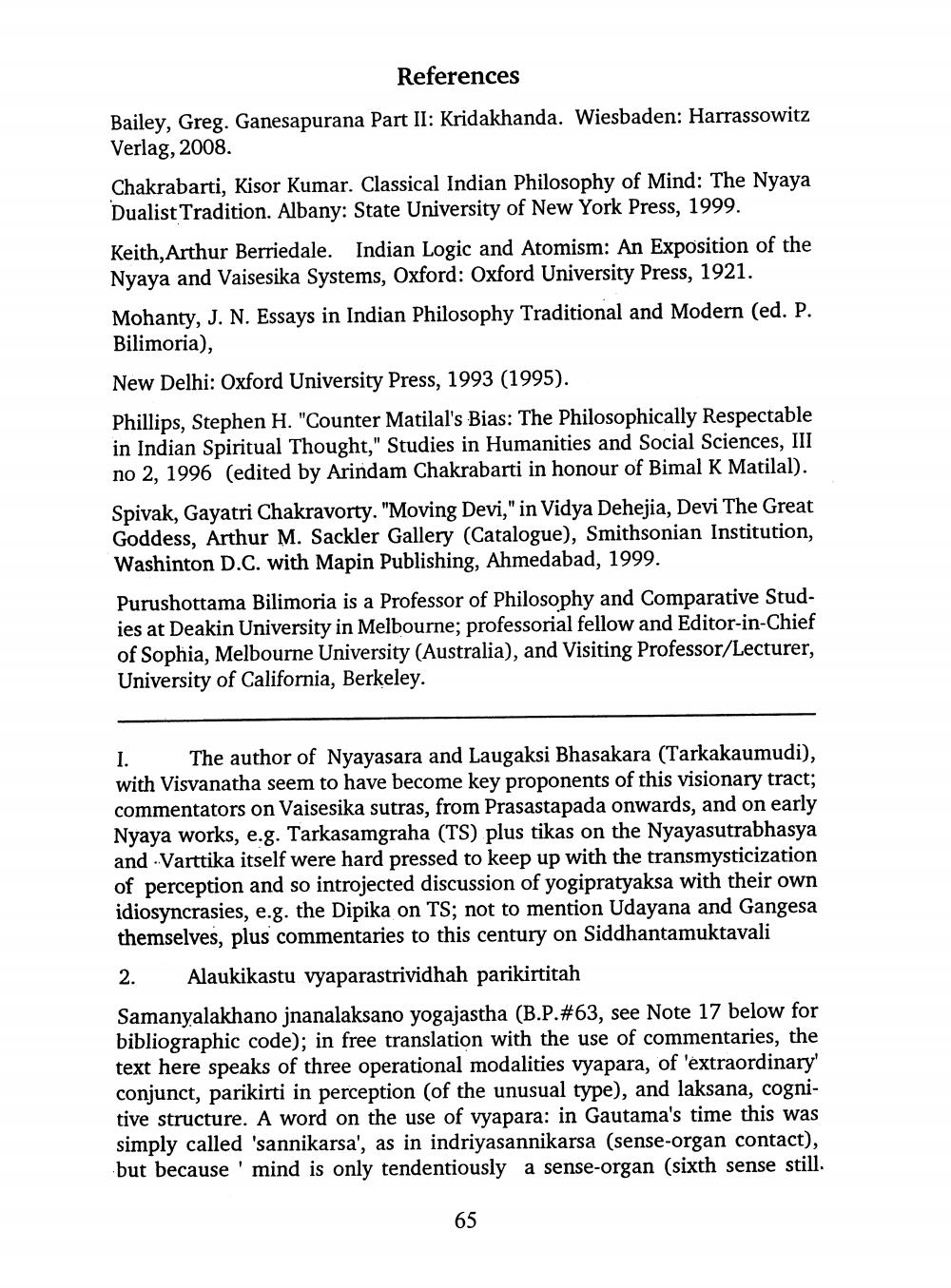________________
References
Bailey, Greg. Ganesapurana Part II: Kridakhanda. Wiesbaden: Harrassowitz Verlag, 2008. Chakrabarti, Kisor Kumar. Classical Indian Philosophy of Mind: The Nyaya Dualist Tradition. Albany: State University of New York Press, 1999. Keith, Arthur Berriedale. Indian Logic and Atomism: An Exposition of the Nyaya and Vaisesika Systems, Oxford: Oxford University Press, 1921. Mohanty, J. N. Essays in Indian Philosophy Traditional and Modern (ed. P. Bilimoria),
New Delhi: Oxford University Press, 1993 (1995).
Phillips, Stephen H. "Counter Matilal's Bias: The Philosophically Respectable in Indian Spiritual Thought," Studies in Humanities and Social Sciences, III no 2, 1996 (edited by Arindam Chakrabarti in honour of Bimal K Matilal). Spivak, Gayatri Chakravorty. "Moving Devi," in Vidya Dehejia, Devi The Great Goddess, Arthur M. Sackler Gallery (Catalogue), Smithsonian Institution, Washinton D.C. with Mapin Publishing, Ahmedabad, 1999.
Purushottama Bilimoria is a Professor of Philosophy and Comparative Studies at Deakin University in Melbourne; professorial fellow and Editor-in-Chief of Sophia, Melbourne University (Australia), and Visiting Professor/Lecturer, University of California, Berkeley.
1. The author of Nyayasara and Laugaksi Bhasakara (Tarkakaumudi), with Visvanatha seem to have become key proponents of this visionary tract; commentators on Vaisesika sutras, from Prasastapada onwards, and on early Nyaya works, e.g. Tarkasamgraha (TS) plus tikas on the Nyayasutrabhasya and Varttika itself were hard pressed to keep up with the transmysticization of perception and so introjected discussion of yogipratyaksa with their own idiosyncrasies, e.g. the Dipika on TS; not to mention Udayana and Gangesa themselves, plus commentaries to this century on Siddhantamuktavali 2. Alaukikastu vyaparastrividhah parikirtitah
Samanyalakhano jnanalaksano yogajastha (B.P.#63, see Note 17 below for bibliographic code); in free translation with the use of commentaries, the text here speaks of three operational modalities vyapara, of 'extraordinary conjunct, parikirti in perception (of the unusual type), and laksana, cognitive structure. A word on the use of vyapara: in Gautama's time this was simply called 'sannikarsa', as in indriyasannikarsa (sense-organ contact), but because 'mind is only tendentiously a sense-organ (sixth sense still.
65




